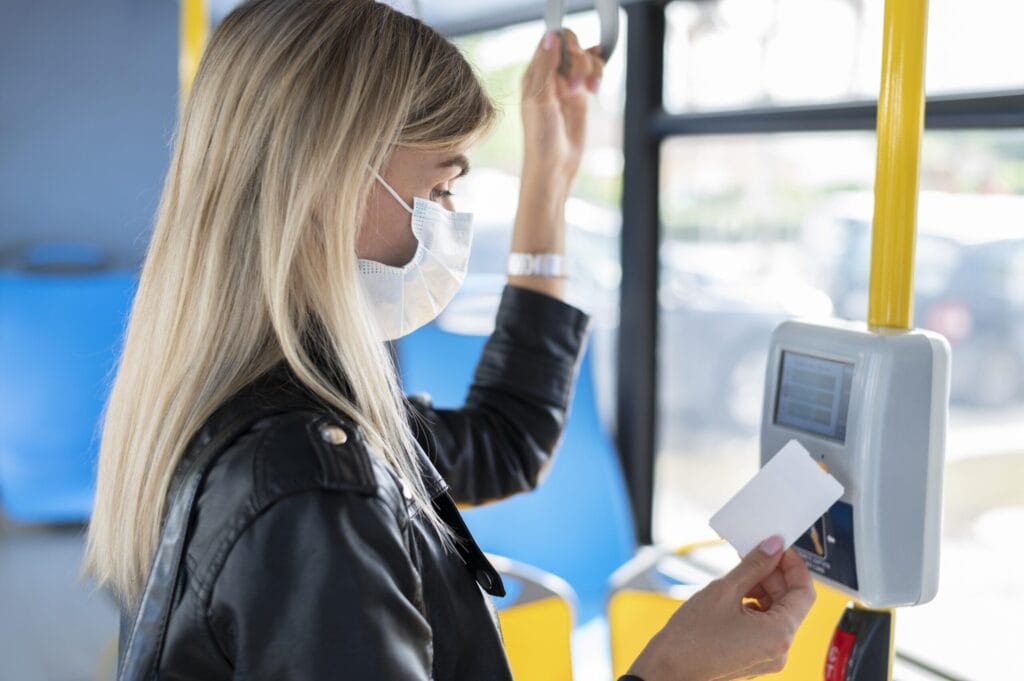1. Introduction: Why Public Transport Users Need Life Insurance Too
When we think about life insurance, we often picture car owners worried about road accidents. But millions of people worldwide rely solely on buses, trains, metros, and trams. Even without owning a car, you face risks every day — commuting, walking to stations, or traveling on public vehicles. Life insurance is just as important for you as it is for drivers, providing financial security for your loved ones.

2. Who Is Considered a “Public Transport Only” Commuter?
A public transport-only commuter is someone who doesn’t own or drive a personal vehicle. They rely entirely on buses, subways, trains, trams, ferries, or ride-shares for daily travel. This group includes city residents, eco-conscious individuals, students, and seniors who prefer the convenience and sustainability of public transport.
3. The Unique Lifestyle of Non-Drivers
Non-drivers often live in walkable cities, plan their schedules around transit timetables, and avoid the expenses of car ownership. While this lifestyle reduces carbon footprint and road accident exposure, it also presents other safety and health risks — such as accidents on public vehicles, slips on platforms, and exposure to crowded environments.
4. Common Risks Faced by Public Transport Users

Even without driving, you may face:
- Slips and falls in stations
- Train or bus collisions
- Pedestrian accidents while walking to stops
- Exposure to weather hazards while commuting
- Health emergencies during travel
5. Why Public Transport Commuters Might Have Lower Insurance Premiums
Some insurers recognize that non-drivers are less likely to be involved in high-speed road accidents, which can lead to slightly lower premiums. However, factors like age, health, occupation, and lifestyle still play a major role in determining your rate.
6. The Case for Life Insurance Without Driving Risks
Since you avoid the risks of personal driving, your main concern is protecting your family from the financial impact of unexpected events — whether from illness, accidents, or unforeseen circumstances on public transport.
7. Affordable Life Insurance Options for Public Transport Users
Popular and budget-friendly options include:
- Term Life Insurance: Low cost, coverage for a fixed period (e.g., 20 years).
- Whole Life Insurance: Lifetime coverage with a savings component.
- Accidental Death & Dismemberment (AD&D): Focused on accident-related coverage, useful for commuters.
8. Term Life Insurance for Public Transport Commuters
Term life is ideal if you want maximum coverage at an affordable rate. Since your driving risk is minimal, you may get competitive rates, making it easier to protect your family for a fixed budget.
9. Whole Life Insurance: A Long-Term Approach
Whole life insurance offers lifelong protection and a cash value component. For eco-conscious commuters, this can be paired with green investment portfolios offered by some insurers.
10. Riders and Add-Ons for Commuter Coverage
You can customize policies with riders like:
- Accidental Death Rider (for public transport accidents)
- Disability Income Rider
- Critical Illness Rider
- Hospital Cash Benefit
11. Green and Eco-Friendly Life Insurance Policies
Some insurers now offer eco-friendly life insurance that invests your premiums into sustainable projects. This aligns perfectly with a public transport commuter’s environmentally conscious lifestyle.
12. How Lifestyle Choices Affect Your Premium
Besides commuting habits, insurers consider:
- Tobacco use
- Diet and exercise
- Medical history
- Occupation risk level
As a public transport user, your active lifestyle (walking more) may improve your health rating.
13. Public Transport Accident Statistics and Insurance
While public transport is statistically safer than personal driving, accidents do happen. Understanding these numbers helps you choose coverage that fits the actual risk.
14. Life Insurance for Students and Young Commuters
Students who rely on buses or trains often think they don’t need life insurance, but policies are cheaper at younger ages. Early purchase locks in low rates for decades.
15. Life Insurance for Seniors Who Don’t Drive
Seniors using public transport can benefit from simplified-issue or guaranteed-issue policies, avoiding medical exams and securing peace of mind.
16. The Role of Income Protection for Commuters
Income protection insurance can be paired with life coverage, ensuring your bills are paid if an accident on your commute leaves you unable to work.
17. Choosing the Right Insurer for Public Transport Users
Look for companies that:
- Offer lifestyle-based discounts
- Provide flexible riders for accidental coverage
- Have experience insuring urban populations
18. Tips for Getting the Best Life Insurance Rates
- Maintain a healthy lifestyle
- Compare at least 3 insurer quotes
- Consider a longer policy term to lock in rates
- Use your “non-driver” status as a bargaining point
19. Common Myths About Life Insurance for Non-Drivers
Myth 1: Only drivers need life insurance.
Myth 2: Public transport accidents are too rare to worry about.
Myth 3: Life insurance is expensive for everyone.
20. Conclusion: Securing Your Future as a Public Transport Commuter
Even if you’ve never owned a car, life insurance remains a vital financial tool. As a public transport user, you enjoy certain cost advantages and can choose policies that align with your sustainable lifestyle. Protecting your loved ones is not about how you travel — it’s about preparing for the unexpected.

